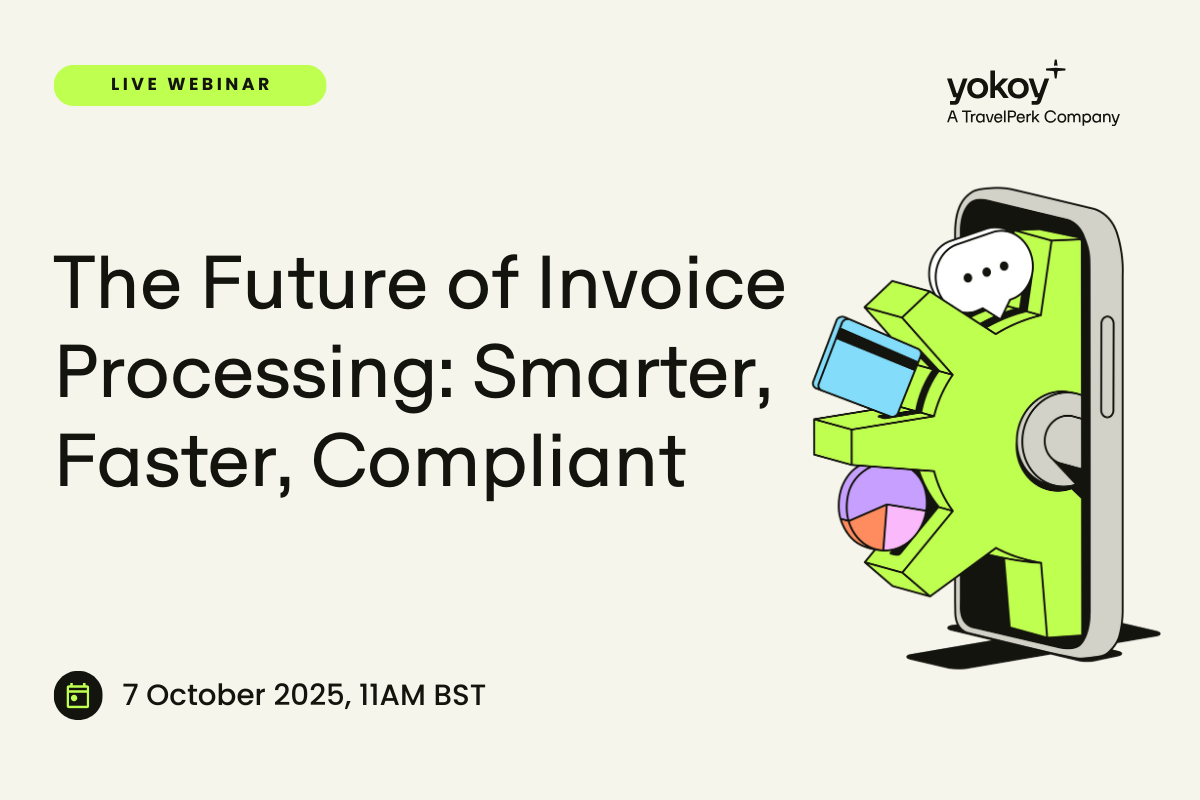Home / Understanding the digital invoice format
Understanding the digital invoice format
- Last updated:
- Blog

For every finance professional who is serious about leading their company to success, managing invoices efficiently should be a top priority. Why? Because transitioning from traditional paper invoices to digital formats can significantly enhance your accounts payable (AP) process. Digital invoices simply offer a cleaner and more organised approach to financial management. And with structured formats you can elevate your workflows significantly, ensuring real-time updates and ultimate accuracy in financial reporting.
Definition of e-invoicing and digital invoices
E-invoicing is the automated, electronic exchange of invoice data between businesses through standardised formats and protocols. It aims to streamline the invoicing process by eliminating manual data entry, reducing human errors, and enhancing transaction speed. E-invoicing solutions allow for direct integration with accounting and ERP systems. They improve efficiency and compliance with regulatory requirements.
Digital invoices and e-invoices have crucial differences
While both digital and e-invoices are electronic invoicing forms, there are some significant differences. The most prominent one is that digital invoices are typically in formats like PDF, JPEG, or other image files, which are primarily designed for human reading. These can be easily viewed on a screen and often look similar to traditional paper invoices. On the other hand, e-invoices are intended to be read and processed by computers without human intervention. They are typically formatted in standardised, structured data formats such as XML, UBL (Universal Business Language), or EDI (Electronic Data Interchange).
Although they are stored and transmitted electronically, digital invoices often require human intervention for processing. This means someone must manually enter the invoice details into an accounting system. Because e-invoices use standardised data formats, they can be automatically processed by accounting and ERP systems. This automation reduces the need for manual data entry, minimises errors, and accelerates the invoicing process.
OCR technology is often used to automate the processing of digital invoices. OCR scans the document and extracts text data, which can then be imported into accounting software. However, OCR can often require manual corrections and validations. E-invoices facilitate direct integration between suppliers’ and buyers’ invoicing systems. This means that an e-invoice can be generated by the supplier’s system and directly integrated into the buyer’s system, ensuring seamless and efficient transaction processing.
Digital formats for invoices
When deciding which invoicing method best suits your company’s needs, you should always consider the different format options. These are typical digital formats:
Digital invoice formats
PDF (Portable Document Format): PDF is a widely used file format that preserves the original document’s formatting and can be viewed on any device with a PDF reader. It is commonly used for sending invoices via email and is easy to create, view, and print. However, manual data entry is required unless OCR is used.
Word (Microsoft Word Document): Word is a text-based document format that can include tables, images, and rich text formatting. It is sometimes used to create and share invoices in a more editable format. However, it can be altered easily, is not as secure, and requires manual data entry.
JPG (JPEG Image): JPG is occasionally used when an invoice is scanned or when a quick snapshot of an invoice is needed. It is easy to view on any device but provides poor text quality for documents. It is not searchable and requires OCR for data extraction.
TIFF (Tagged Image File Format): TIFF is a high-quality image format often used for scanned documents in professional settings where high-quality image retention is necessary. Its disadvantages are the large file size, the requirement for OCR for data extraction, and the inability to edit it.
E-invoice formats
XML (Extensible Markup Language): XML is a flexible, structured data format that computers can easily read and integrate into different systems. It is widely used for electronic data interchange (EDI) and various business applications as it is highly customisable. However, it can be complex to set up and requires standardisation agreements.
EDI (Electronic Data Interchange): EDI is another standardised format for exchanging business documents between systems. It is common in retail, manufacturing, and logistics industries for standardised data exchange as it reduces errors, increases processing speed, and enhances business relationships. Its disadvantages are that the initial setup can be costly and requires quite some technical expertise.
ZUGFeRD (Zentraler User Guide des Forums elektronische Rechnung Deutschland): This hybrid format combines PDF and XML, and it is used mainly in Germany. It allows for both human-readable and machine-readable invoices, making it suitable for businesses transitioning to e-invoicing. With ZUGFeRD, you can combine the benefits of PDF and XML and, therefore, facilitate the adoption of e-invoicing. However, it is less common outside of Germany and requires an understanding of both formats.
Facture X: This European e-invoicing standard combines PDF and XML for dual readability, similar to ZUGFeRD. It is used in the European Union to comply with e-invoicing standards. However, compliance with EU standards is required, and the initial setup can be complex.
XRechnung: This is a German e-invoicing standard for public sector invoices based on XML. Invoicing public entities in Germany is mandatory to ensure compliance with German public sector requirements and promote standardisation. The disadvantages are its specific use in Germany and its requirement for adherence to strict guidelines.
Fatura PA: This is an Italian e-invoicing standard used for public administration. It is mandatory for businesses invoicing public administrations in Italy. It ensures compliance with Italian public sector requirements and promotes efficiency. But it is specific to Italy, and the initial setup requires adherence to local regulations.
Invoice data summary
A digital invoice must contain specific information to ensure it is clear, legally compliant and useful for the invoicing party and the recipient. This is essential information that must be included:
- name and company address of the invoicing party
- name and company address of invoice recipient
- VAT number
- unique invoice number
- the date of the invoice
- the date the goods were provided
- description of the goods, including the amount
- costs which are charged per good
- total costs
- VAT
- payment terms
More information can be included if necessary:
- cash discounts
- offer number to which the invoice refers
- purchase order number
- terms of delivery
Make the most of your data – with modern invoice processing
As a finance leader, you know that managing invoices is a critical yet time-consuming task. Transforming how you handle invoices can revolutionise your operations. Modern invoice processing turns unstructured data into structured data, unlocks automated workflows, and canm lead to significant efficiencies and cost savings.
Traditional invoices in formats like PDFs, Word documents, or images require extensive manual entry. This is not only labour-intensive and prone to errors, but manually entering invoice data also slows down your financial operations, leading to delays in payments and reporting. E-invoices, using formats like XML or EDI, enable direct computer-to-computer exchange of invoice data. This automation eliminates manual entry, accelerates processing, and reduces errors.
Digitising the invoice process has already helped many organisations streamline their accounts processing workflows and deliver huge cost savings — in fact, research has shown electronic invoicing can save you between 60 and 80 per cent compared to paper invoicing processing.
The benefits of e-invoicing at a glance:
- Boost efficiency
- Save resources (labour costs, paperless work)
- Improve cash flow with faster payments and early payment discounts
- Enhance compliance and security with regulatory adherence and working with secure data
- Optimise data management with centralised Information and real-time insights
How Yokoy and AI help to streamline digital invoice management
Yokoy takes digital invoice management to a new level with its AI-powered platform, with tools designed to streamline and automate the accounts payable process. By using advanced AI technology, Yokoy enables companies to transform unstructured invoice data into structured, actionable insights, leading to significant efficiency gains and cost savings.
Automated data capture and extraction
Yokoy uses AI to automate invoice data capture from various formats, including paper-based invoices, PDFs, and e-invoices. This eliminates the need for manual data entry, reducing errors and saving time. Our AI-powered optical character recognition (OCR) technology ensures accurate data extraction from invoices, capturing essential details such as supplier names, invoice numbers, dates, and amounts.
Smart data validation and verification
Our platform performs smart data validation by verifying the extracted data against related documents like purchase orders and delivery receipts. This two-way or three-way matching process ensures that only correct and authorised payments are processed, reducing the risk of errors and fraud.
Automated approval workflows
With Yokoy, you can automate invoice routing through customised approval workflows. You can prioritise invoices based on payment terms and amounts and efficiently escalate exceptions to relevant team members. This speeds up the approval process, ensures compliance with company policies, and reduces payment delays.
Fraud detection and compliance
Yokoy’s AI algorithms continuously monitor transaction patterns to detect and alert users of potential fraud. The platform ensures compliance with internal policies and external regulations by automatically updating and enforcing regulatory requirements, reducing the risk of non-compliance penalties.
Real-time analytics and reporting
Yokoy provides insights into spending patterns and your company’s financial health. This helps you and your team make data-driven decisions, optimise your financial strategies, and identify cost-saving opportunities.
Seamless ERP Integration
Yokoy integrates smoothly with existing ERP systems, automatically updating financial records. This integration enhances reporting accuracy and timeliness, providing a unified view of financial operations across the organisation.
Next steps
Switching from paper to digital invoices with Yokoy will transform your accounts payable process by centralising invoice management and integrating seamlessly with your existing accounting tools. Yokoy’s AI-powered OCR technology eliminates manual data entry, reducing errors and speeding up processing times. Automated approval workflows and real-time analytics further enhance efficiency, leading to remarkable cost and time savings while ensuring compliance and supporting your business with powerful fraud detection features.
By implementing Yokoy’s holistic solution, you can unlock the full value of your data, gaining insightful, real-time reporting that supports better financial decision-making. This transition results in faster payments, improved cash flow, and strengthened supplier relationships. Experience these benefits firsthand by booking a demo with Yokoy and upgrade your invoice management process.
Simplify your invoice management
Related content
If you enjoyed this article, you might find the resources below useful.


